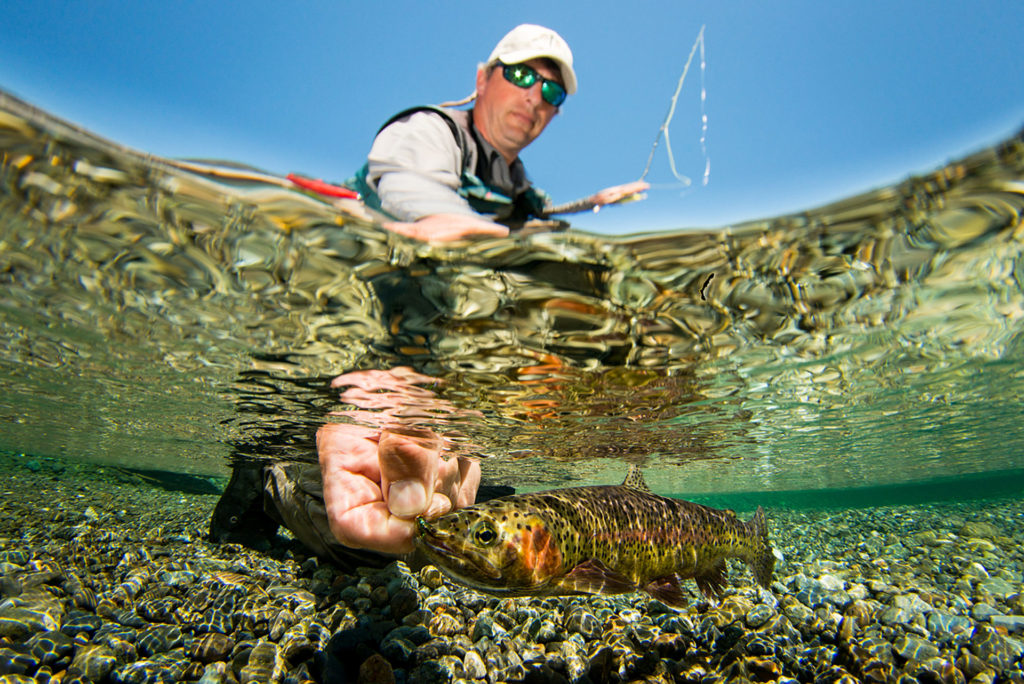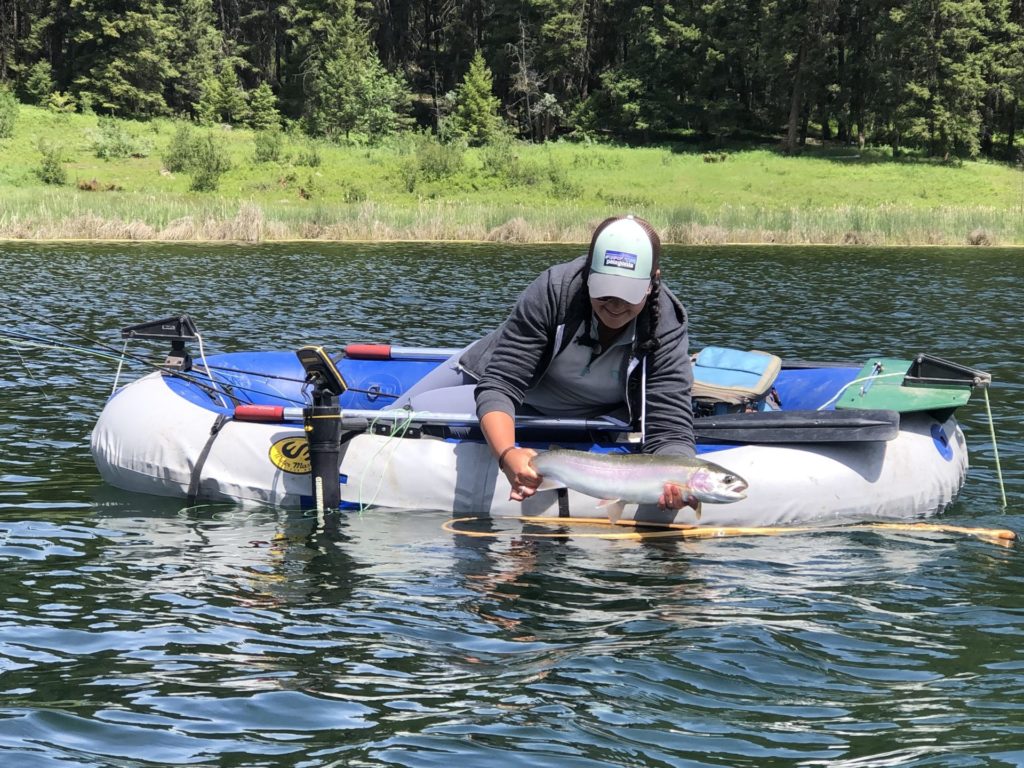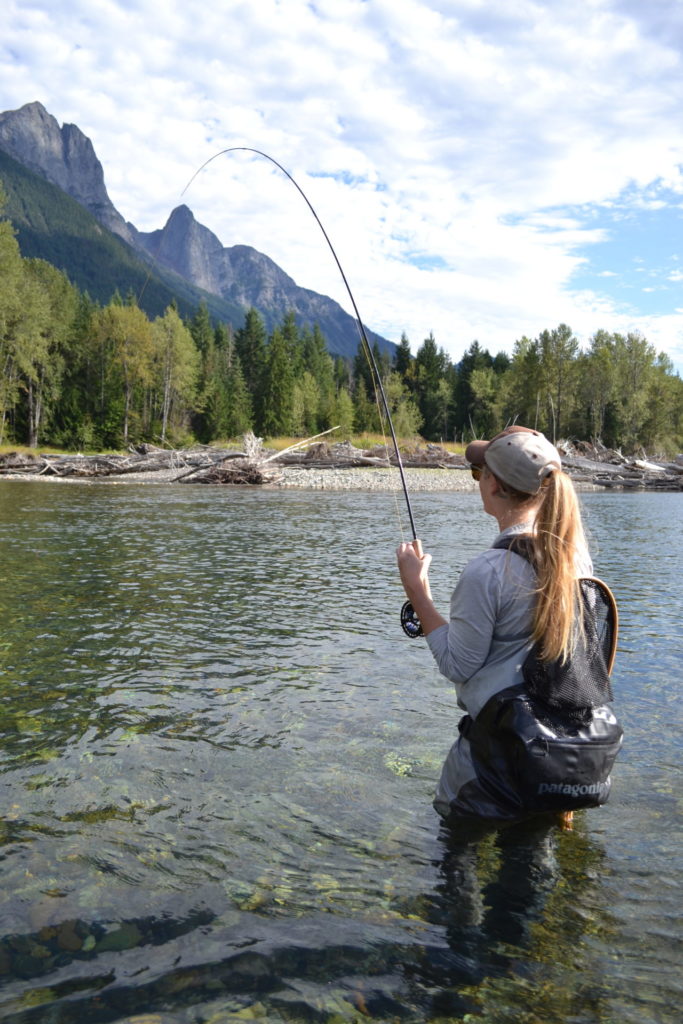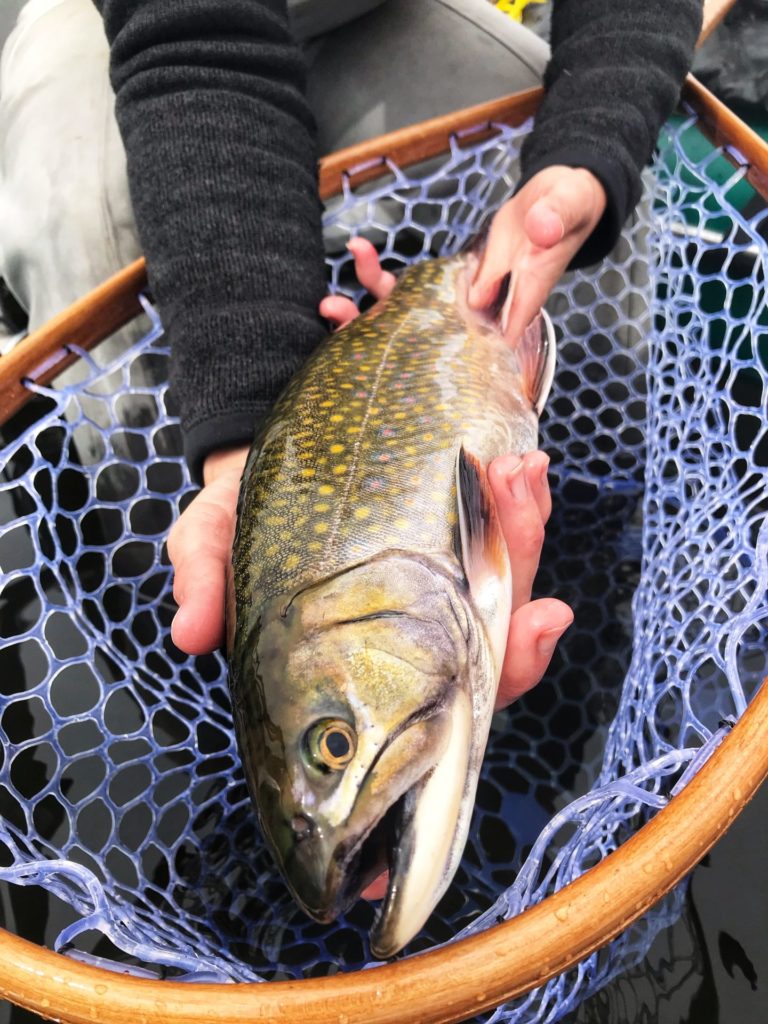My introduction into angling began at a young age and, as with many before me, my initiation started with rainbow trout available in stocked lakes throughout the province’s plethora of forestry camp sites. My dealings with various trout species began as an early childhood crush that has since flourished into a full-blown love affair. Years later, and a myriad of adventures in my wake, my passion and love for trout has morphed into an obsession. I am bound to the technicality and precision required by many of our local fisheries. Picky trout rising to a specific size fly, in a particular pattern, in an exact presentation, may be the source of hours of frustration, but it is that meticulous methodology that keeps myself, and countless others, coming back.
Advertisement

But how has trout fishing changed? And where do trout stand today in southern British Columbia, compared to other sport favourites such as salmon or steelhead? How does the new generation of anglers connect with our local trout populations? And finally, what does the future hold for our favourite destinations?
“Trout fishing” is a broad statement. Rivers, lakes and saltwater scenarios are all part of the trout fishing realm, and several of the target species transcend these environments. Rainbow trout, cutthroat trout, bull trout, Dolly Varden, whitefish and brook trout all fall under the umbrella term of “trout,” each with their own attributes and skill requirement. Trout are not only diverse in their availability, but in their beauty as well. I have had the pleasure of encountering a number of native, as well as introduced, species in BC, with a few still on the list. There is virtually never a time lacking in an excuse to chase trout. Resident and anadromous stream species provide perpetual entertainment throughout the year, while the stillwater scene in BC’s innumerable lakes allows anglers a lifetime of fishing in both liquid and solid states.
Advertisement
A portion of this article’s readership might see this as a focus on the obvious or a redundant celebration of those opportunities right in front of us; however, the aim is remembering why we fell in love with trout fishing all over again. Angling goes beyond just catching; and if we are able to share in our collective passions, we will not only have a greater respect for those things we choose to pursue and the places they take us, but also a greater respect for one another. Trout fishing is the universal angling experience and those young and old, new and experienced, fly and gear, are bound together by a love for the chase.

Trout fishing has a coolness with today’s younger angling generation that stands alone next to steelhead and salmon. Becoming an accomplished trout angler pulls together an extensive list of skills and attention to detail that sets it apart from the glorious world of their larger anadromous cousins. The typical trout religion of our southern neighbours is defined in their own right, but a BC trout enthusiast stands alone in a different domain. Unique techniques, separate strategies, volatile conditions and an often-daunting number of possibilities molds a type of trout angler found nowhere else on this planet. The base of knowledge generated through such diverse encounters lends itself to developing very observant and dedicated anglers. Trout fishers in BC have to be capable of handling change and be willing to adapt when necessary. Streams transform season to season and each species has its own tempo in varying scenarios. Young or newer anglers are approaching trout fishing by trying new tactics and taking on new perspectives. Social media and the Internet have allowed anglers from around the world to share techniques, patterns and setups across international boundaries to unite trout addicts from all walks of life. This unprecedented distribution of information has increased effectiveness for anglers and expanded the realm of possibility.
Advertisement
Because trout fishing is very accessible to the learning cohort of anglers, it serves to instill etiquette and handling techniques early on. Conservation approaches are becoming more prolific and the rise of catch-and-release mantras are prevalent in the trout world. This mindset is becoming extremely important, especially as each wild fish is becoming vital to the future of certain populations.
As the connection to the outdoors becomes more important with every waking hour we spend in our digital lives, a large number of new anglers are approaching fishing as a means to connect with the wild world. Outdoor enthusiasts are seeking out new destinations in the hopes of exploring past the scope of the city, and for many their vehicle of discovery is angling.

Targeting trout can be done throughout the year with relative ease, no matter the tools you wish to use or the waterbody available. BC is known not only as a destination for salmon and steelhead fishing, but also a home to world-class trout angling. Despite the unfathomable choice in trout, a few species consistently stand out and they are some of my personal favourites.
BC’s rainbow trout fishery is in a class of its own, with endless options for any angler. Stocked Pennask, Blackwater and Fraser Valley trout have been skillfully developed to flourish in the province’s interior lakes, while mountain drainages still host aggressive wild strains. As winter comes to an end, I pull out the pontoon boat and chironomid boxes in anticipation for ice-off and adventures inland. Navigating new lakes and unlocking finicky hatches or feeding regimes makes the sound of success on a screaming reel even more heart throbbing. I then find myself counting down the days until summer, when some of my favourite dry-fly systems open and my compulsion for tight line hookups takes over. Rainbow trout hold a top accolade in popularity and fun, as they inhabit a number of locations all while providing exciting fights and aerial displays. Rainbow trout have a special place in the soul, and many anglers are willing to share a story or two about the one that got away.
Living in the Lower Mainland, I am no stranger to the special life history of char, who inhabit a few of my home rivers. Bull trout are present throughout the province; however, a unique anadromous population is found exclusively on the south coast of BC and throughout the northwest corner of Washington State. Bull trout are coming back after numerous years of decline, due mostly to pollution, habitat degradation and competition with non-native species. On the south coast, the anadromous sea-run bulls are known for their tenacious and predatory demeanor, while their giant cousins in the eastern waterways of the Kootenays hold their own in size and brute strength. This species of char has gained rapid popularity with the sport-fishing community because of their aggressive feeding behaviours and unmatched bulldog-style fight that are on a level all their own.
Both of these species have their own dedicated following. Other trout populations that were once in the by-catch or shoulder season category are now the main objective with their own audience. People are expanding their choice of pursuits and finding joy in the new or different. Trout fishing invites anglers into a world between the consistent run timing of salmon, and steelhead that offers unrivalled diversity.

Recreational fisheries are becoming more heavily regulated, as steelhead and salmon stocks are rapidly declining and environmental impacts are being realized. Native trout are feeling the pressure, as they rely on salmon runs for food and to nourish the surrounding watershed. Wild areas are at risk of logging or mining operations that threaten both ecosystem devastation and pollution. Escalating wildfire seasons limit backcountry access and land ownership battles put user groups at each other’s throats. Local stocking programs have provided premier trophy lake fishing opportunities for years, but there are always fears of funding cutbacks. With these considerations aside, anglers are still left with a vast wilderness at our fingertips and an angler’s paradise in the palm of our hands.
With such a massive landscape of endless trout fishing, it is difficult to comprehend its demise; however, with so much else at risk, the future remains foggy. I want the fisheries that belong to my children’s children to be as prolific as they are now, and for the love story to continue. The value of these fisheries cannot be summed into a monetary total, as they are a collection of personal and spiritual experiences shared by a passionate community. As we grow and develop as anglers, so must our strategies to protect that which we hold so tightly. It is my generation and the generations that follow that need to realize what we have remaining and not settle with the status quo or accept shifting baselines. We need to stand up for our wild places and protect that which we all enjoy so much; if not just for the future, but for the love of trout.